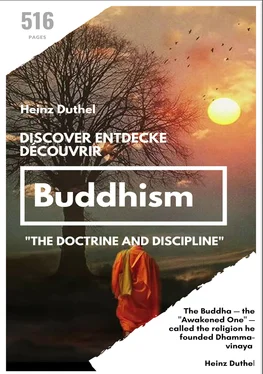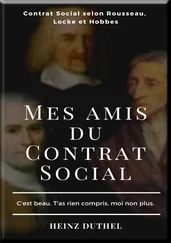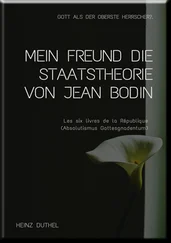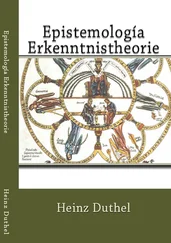A Brief Summary of the Buddha's Teachings
The Four Noble Truths
Shortly after his Awakening, the Buddha delivered his first sermon, in which he laid out the essential framework upon which all his later teachings were based. This framework consists of the Four Noble Truths, four fundamental principles of nature (Dhamma) that emerged from the Buddha's radically honest and penetrating assessment of the human condition. He taught these truths not as metaphysical theories or as articles of faith, but as categories by which we should frame our direct experience in a way that conduces to Awakening:
1. Dukkha: suffering, unsatisfactoriness, discontent, stress;
2. The cause of dukkha: the cause of this dissatisfaction is craving (tanha) for sensuality, for states of becoming, and states of no becoming;
3. The cessation of dukkha: the relinquishment of that craving;
4. The path of practice leading to the cessation of dukkha: the Noble Eightfold Path of right view, right resolve, right speech, right action, right livelihood, right effort, right mindfulness, and right concentration.
Because of our ignorance (avijja) of these Noble Truths, because of our inexperience in framing the world in their terms, we remain bound to samsara, the wearisome cycle of birth, aging, illness, death, and rebirth. Craving propels this process onward, from one moment to the next and over the course of countless lifetimes, in accordance with kamma (Skt. karma), the universal law of cause and effect. According to this immutable law, every action that one performs in the present moment — whether by body, speech, or mind itself — eventually bears fruit according to its skillfulness: act in unskillful and harmful ways and unhappiness is bound to follow; act skillfully and happiness will ultimately ensue.13 As long as one remains ignorant of this principle, one is doomed to an aimless existence: happy one moment, in despair the next; enjoying one lifetime in heaven, the next in hell.
The Buddha discovered that gaining release from samsara requires assigning to each of the Noble Truths a specific task: the first Noble Truth is to be comprehended; the second, abandoned; the third, realized; the fourth, developed. The full realization of the third Noble Truth paves the way for Awakening: the end of ignorance, craving, suffering, and kamma itself; the direct penetration to the transcendent freedom and supreme happiness that stands as the final goal of all the Buddha's teachings; the Unconditioned, the Deathless, Unbinding — Nibbana (Skt. Nirvana).
The Eightfold Path and the Practice of Dhamma
Because the roots of ignorance are so intimately entwined with the fabric of the psyche, the unawakened mind is capable of deceiving itself with breathtaking ingenuity. The solution therefore requires more than simply being kind, loving, and mindful in the present moment. The practitioner must equip him- or herself with the expertise to use a range of tools to outwit, outlast, and eventually uproot the mind's unskillful tendencies. For example, the practice of generosity (dana) erodes the heart's habitual tendencies towards craving and teaches valuable lessons about the motivations behind, and the results of, skillful action. The practice of virtue (sila) guards one against straying wildly off-course and into harm's way. The cultivation of goodwill (metta) helps to undermine anger's seductive grasp. The ten recollections offer ways to alleviate doubt, bear physical pain with composure, maintain a healthy sense of self-respect, overcome laziness and complacency, and restrain oneself from unbridled lust. And there are many more skills to learn.
The good qualities that emerge and mature from these practices not only smooth the way for the journey to Nibbana; over time they have the effect of transforming the practitioner into a more generous, loving, compassionate, peaceful, and clear-headed member of society. The individual's sincere pursuit of Awakening is thus a priceless and timely gift to a world in desperate need of help.
Discernment (pañña)
The Eightfold Path is best understood as a collection of personal qualities to be developed, rather than as a sequence of steps along a linear path. The development of right view and right resolve (the factors classically identified with wisdom and discernment) facilitates the development of right speech, action, and livelihood (the factors identified with virtue). As virtue develops so do the factors identified with concentration (right effort, mindfulness, and concentration). Likewise, as concentration matures, discernment evolves to a still deeper level. And so the process unfolds: development of one factor fosters development of the next, lifting the practitioner in an upward spiral of spiritual maturity that eventually culminates in Awakening.
The long journey to Awakening begins in earnest with the first tentative stirrings of right view — the discernment by which one recognizes the validity of the four Noble Truths and the principle of kamma. One begins to see that one's future well-being is neither predestined by fate, nor left to the whims of a divine being or random chance. The responsibility for one's happiness rests squarely on one's own shoulders. Seeing this, one's spiritual aims become suddenly clear: to relinquish the habitual unskillful tendencies of the mind in favor of skillful ones. As this right resolve grows stronger, so does the heartfelt desire to live a morally upright life, to choose one's actions with care.
At this point many followers make the inward commitment to take the Buddha's teachings to heart, to become "Buddhist" through the act of taking refuge in the Triple Gem: the Buddha (both the historical Buddha and one's own innate potential for Awakening), the Dhamma (both the Buddha's teachings and the ultimate Truth towards which they point), and the Sangha (both the unbroken monastic lineage that has preserved the teachings since the Buddha's day, and all those who have achieved at least some degree of Awakening). With one's feet thus planted on solid ground, and with the help of an admirable friend or teacher (kalyanamitta) to guide the way, one is now well-equipped to proceed down the Path, following in the footsteps left by the Buddha himself.
Virtue (sila)
Right view and right resolve continue to mature through the development of the path factors associated with sila, or virtue — namely, right speech, right action, and right livelihood. These are condensed into a very practical form in the five precepts, the basic code of ethical conduct to which every practicing Buddhist subscribes: refraining from killing, stealing, sexual misconduct, lying, and using intoxicants. Even the monks' complex code of 227 rules and the nuns' 311 ultimately have these five basic precepts at their core.
Concentration (samadhi)
Having gained a foothold in the purification of one's outward behavior through the practice of sila, the essential groundwork has been laid for delving into the most subtle and transformative aspect of the path: meditation and the development of samadhi, or concentration. This is spelled out in detail in the final three path factors: right effort, by which one learns how to favor skillful qualities of mind over unskillful ones; right mindfulness, by which one learns to keep one's attention continually grounded in the present moment of experience; and right concentration, by which one learns to immerse the mind so thoroughly and unwaveringly in its meditation object that it enters jhana, a series of progressively deeper states of mental and physical tranquillity.
Right mindfulness and right concentration are developed in tandem through satipatthana ("frames of reference" or "foundations of mindfulness"), a systematic approach to meditation practice that embraces a wide range of skills and techniques. Of these practices, mindfulness of the body (especially mindfulness of breathing) is particularly effective at bringing into balance the twin qualities of tranquillity (samatha) and insight (vipassana), or clear-seeing. Through persistent practice, the meditator becomes more adept at bringing the combined powers of samatha-vipassana to bear in an exploration of the fundamental nature of mind and body.14 As the meditator masters the ability to frame his immediate experience in terms of anicca (inconstancy), dukkha, and anatta (not-self), even the subtlest manifestations of these three characteristics of experience are brought into exquisitely sharp focus. At the same time, the root cause of dukkha — craving — is relentlessly exposed to the light of awareness. Eventually craving is left with no place to hide, the entire karmic process that fabricates dukkha unravels, the eightfold path reaches its noble climax, and the meditator gains, at long last, his or her first unmistakable glimpse of the Unconditioned — Nibbana.
Читать дальше












